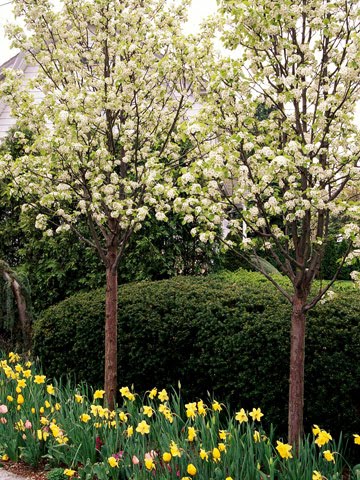Step-by-step: Flagstone path
Step 1:Use Sunset Magazine's easy instructions to install your own path this weekend. The Ghetto Gardener has been trying to install great garden paths since 2002, perhaps these easy instructions will help. Who knows, but the good folks at Sunset sure do make it look easy.
 A good path welcomes you to your garden and invites you to slow down and see what's happening there.
A good path welcomes you to your garden and invites you to slow down and see what's happening there.
You can use it to add curves and angles to your landscape. A path can define a new planting area or the perfect spot for a fountain, arbor, or bench.
The first step in any path is to prepare your site. Smooth your surface, remove weeds, and outline the edges.
See Sunset's Step-by-step: How to make a flagstone path (below, or click here to link to Sunset's website.)
Concrete, aggregate, bark, gravel, and stones can be set directly on stable soil; paths made of of other materials need a base.
Sand is a good choice, but it can wash out from under pavers and bricks, making them settle unevenly. To prevent washout in rainy areas, layer sand over a 2-inch gravel base.
Many people also put landscaping fabric under any loose-laid material (like gravel) to keep it from mixing with the sand or soil below. Keep the fabric down by stuffing its edges under the benderboards.
You can make grade changes either with steps or simply by sloping the path.
 A good path welcomes you to your garden and invites you to slow down and see what's happening there.
A good path welcomes you to your garden and invites you to slow down and see what's happening there.You can use it to add curves and angles to your landscape. A path can define a new planting area or the perfect spot for a fountain, arbor, or bench.
The first step in any path is to prepare your site. Smooth your surface, remove weeds, and outline the edges.
See Sunset's Step-by-step: How to make a flagstone path (below, or click here to link to Sunset's website.)
Concrete, aggregate, bark, gravel, and stones can be set directly on stable soil; paths made of of other materials need a base.
Sand is a good choice, but it can wash out from under pavers and bricks, making them settle unevenly. To prevent washout in rainy areas, layer sand over a 2-inch gravel base.
Many people also put landscaping fabric under any loose-laid material (like gravel) to keep it from mixing with the sand or soil below. Keep the fabric down by stuffing its edges under the benderboards.
You can make grade changes either with steps or simply by sloping the path.
Install benderboard edging first, then put down landscape fabric (available at nurseries) to prevent weeds. Secure fabric edges under the benderboard edging.

Step 2:
Pour a 2-inch-thick layer of sand over the landscape fabric, raking it smooth. (In rainy areas, put down a 2-inch gravel layer first.)

Step 3:
As you rake, moisten the sand with a fine spray from the hose.

Step 4:
Firm the sand. Using a drum roller or a hand tamper, pass over the moist sand several times to pack it down.
 Step 5:
Step 5:Add steppingstones, then wiggle them in so they're firmly embedded.
 Step 6:
Step 6:To finish, fill cracks between stones with gravel, or ― to hold flagstones more firmly ― use something smaller like decomposed granite.
 source: Sunset Magazine
source: Sunset Magazine













No comments:
Post a Comment